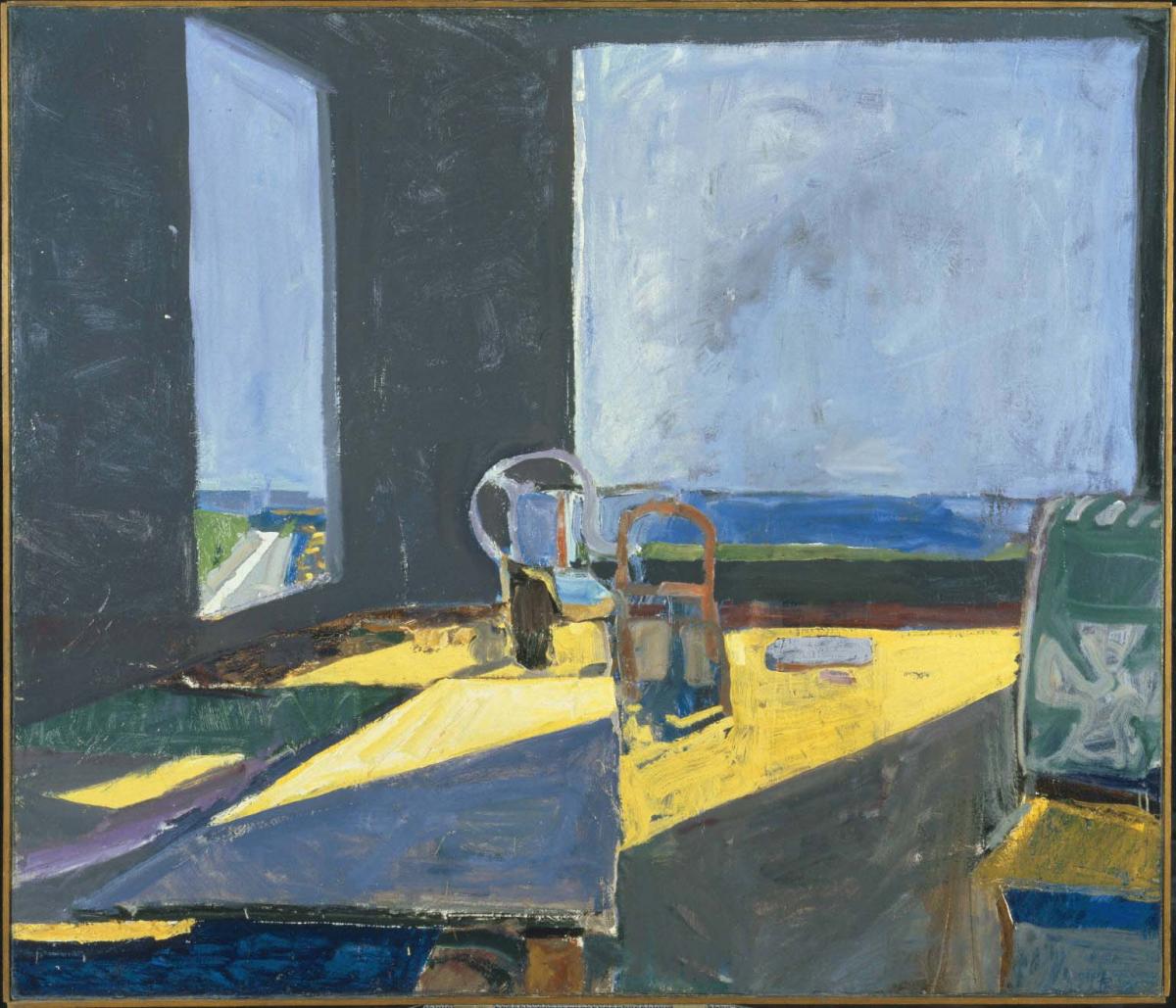Interior with View of the Ocean
Richard Diebenkorn ( 1957 )

Interior with View of the Ocean exemplifies the figurative style that occupied Diebenkorn between 1955 and 1967. Just as he reached his peak as a painter in the abstract-expressionist mode, he believed his abstractions were becoming too expressive and emotional. Although he continued to conceive of his paintings as abstract arrangements of form and color, he began to turn to specific objects and models found in nature, which became sources for observation and interpretation of spatial composition and color relationships. The limitations imposed by a concrete subject appealed to Diebenkorn’s innate sense of order and control; he appreciated the conflict between reality and abstraction. This change in style perhaps was influenced by Diebenkorn’s friend and mentor David Park, who began painting representational works in 1950.
Diebenkorn’s figurative paintings, more than any others in his oeuvre, reflect his indebtedness to Matisse, whose works he had admired since the early 1940s in his frequent visits to The Phillips Collection. Diebenkorn was particularly inspired and influenced by Matisse’s Studio, Quai St. Michel, 1916. He admired the French artist for his use of flat color and creation of spatial tension between the surface of the picture and implied space beyond it.
Interior with View of the Ocean conveys Diebenkorn’s intuitive interest in underlying geometry, spatial ambiguity, and the structured balance of light and color. Although the inspiration for the image derives from reality, his foremost concern was to break the painted surface into flat color planes. The recession into depth implied by the subject—a corner of a room with large bay windows and furniture—is limited by the interlocked color areas. The inward slant of the left window is held in check by the large, blue expanse of the window view. Similarly, the recession of the road, visible through the left window, is halted by a lavender-blue strip—the ocean—which is pulled forward, flattened, and balanced by the similarly colored foreground shape. Diebenkorn rendered the light and shadows on the tabletop into triangular, rectangular, and trapezoidal shards of color—intense yellows anchored by cool blues and greens. He painted methodically in many layers, making repeated efforts to redefine the image, becoming visible in the various transparent veils of color applied in multi-directional, gestural brushstrokes. The surface texture of Interior with View of the Ocean is particularly complex as it exists as a re-working of an earlier Berkeley abstraction.